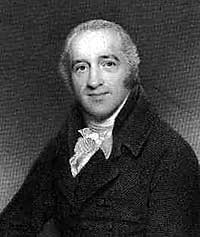Linzi, my brilliant PA, is working here throughout my time off, except for when she is on leave, and so for the first time I was in the house at the same time as she was working in the office. She has done an immaculate job of making sure I know nothing of what is happening in the Archdeaconry and Diocese, but for these few days I found myself battling with curiosity. 'What is going on at ........?', 'I wonder what that phone call was about?'.
On one of the days she was asked to go and fill in at Bishop Chris's office, while his own PA was off work. To my surprise, the 'work' phone here never stopped ringing. It was all I could do not to go into the office and listen to the messages, an internal battle with echoes of Romans 7. The red light on the answering machine flashed for 24 hours, while I resisted the urge to press the button and listen, just the once. It was ultimately the fear of discovery by Linzi the next day that prevented me.
All this, and a very helpful article in today's Church Times by Sarah Horsman of the Sheldon Centre, got me thinking about dangers and damage in ministry, and the benefits of not doing it for a time.
I remember many years ago, before my first (1996) sabbatical, a conversation in the slips during a Diocesan cricket match. A clergyman on sabbatical (but still playing Diocesan cricket!) said to me, 'You don't realise the effect vicar-ing has on you until you stop doing it for a while'. The same can be said for archdeacon-ing, in a different way. Full-time Church of England ministry is by no means entirely unique, but many aspects of it are quite unlike any form of paid work, employed or self-employed. The almost unquestioned expectation of a six-day week, more often than not with long hours; the combined home and work base; the intangible and often elusive reward of faith that you are serving God's plans and purposes when the external evidence is sparse. And ministry can be addictive - in a very unhealthy way.
It is the relentless six-day week, which for many clergy can leak alarmingly into the seventh day, that provides the fundamental justification for clergy sabbaticals. That, together with the critical realisation that the quality of ministry depends first on the individual's relationship with God, and then on the freshness and alertness of their mind, far more than on toil and perspiration (although those are necessary too). Time out for regular retreats and occasional sabbaticals brings immeasurable benefits to mind and sprit. Another category of people with the opportunity to take occasional sabbaticals, of a rather different kind, are university academics, for whom freshness of mind and originality of thought again are essential qualities.
Most clergy who have taken sabbaticals have seen the raised eyebrows, either of lay people who have no comparable opportunity, or of other clergy who see themselves as so indispensable that they would never contemplate taking one. It is true that many lay people work extended schedules, not always for financial reward, and then point out that the Church seems to expect them to put in an extra stint in evenings and at weekends, but this is an extra stint of doing something different from their daily work and usually with the buck stopping somewhere else. It is the consistent pressure of responsibility and expectations, the erosion of time off by pastoral emergencies or a persistent caller, the lack of space to think and reflect, that wear so many down. There may be no obvious escape route from the Vicarage. Some find it harder than others to learn from Jesus how taking his yoke upon us does, in fact, bring rest for our souls. This is fertile soil for inappropriate attitudes or behaviour to take root. Some clergy become blunt instruments in God's hands, or break down completely. A sabbatical may only turn up once in a Preston Guild, but well used it can bring years of benefit. I trust mine will help to energise the remaining years of my full-time ministry.
A month in now, and some old habits die hard - that's why it's been a testing week. But the benefits are also taking hold. For the most part, despite my battle with that flashing red light, I've begun to march to a different drummer and readjust my vision of God and his world.
Next week, I shall return to my ministerial womb, the theological college at which I trained, St John's, Nottingham, for a summer school to 'Top Up Your Theology'. Not just brain training, I fancy, but a return to where it all began and a different kind of opportunity for renewal and refreshment.
Come to me, all you that are weary and are carrying heavy burdens, and I will give you rest
Matthew 11:28




























